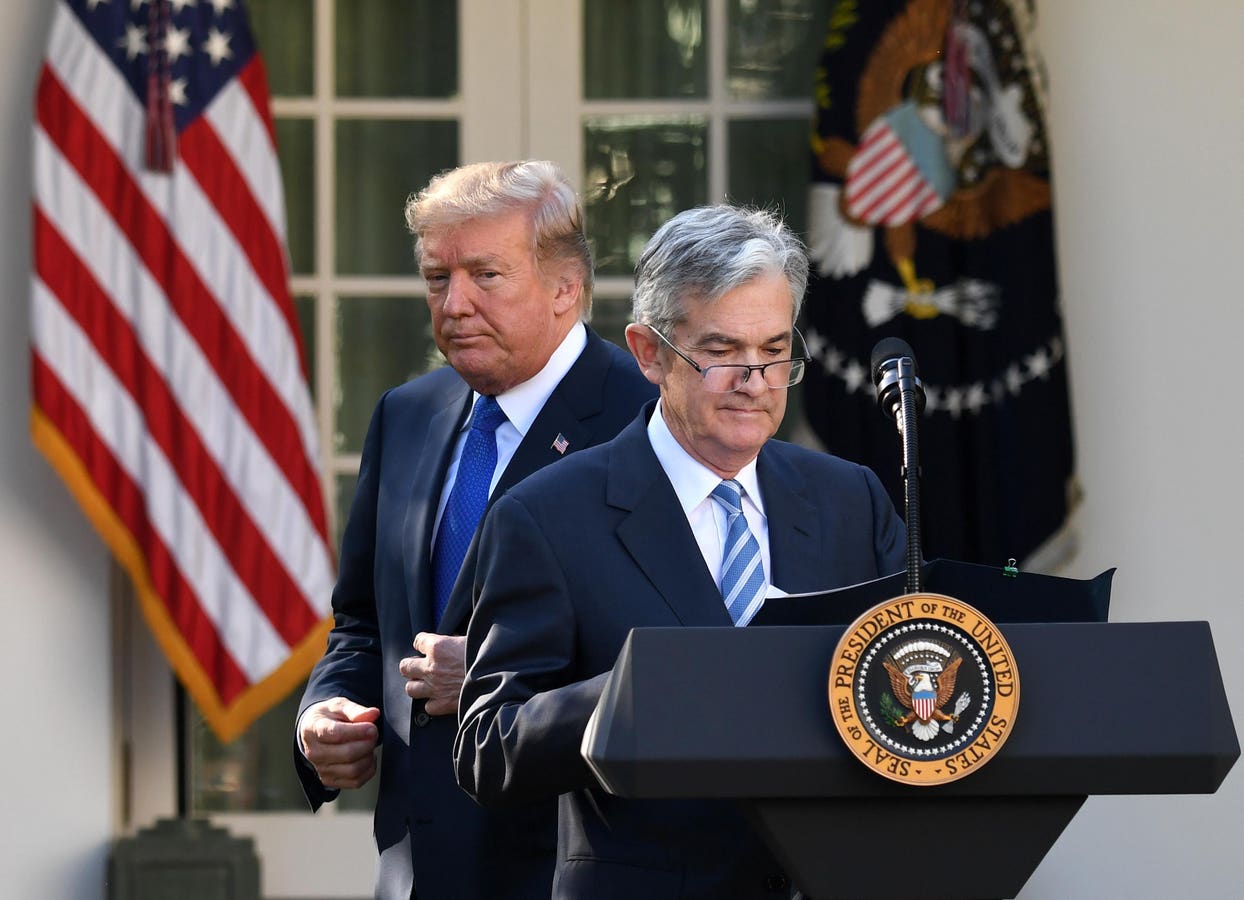President Donald Trump and Federal Reserve Chair Jerome Powell (Xinhua/Yin Bogu via Getty Images)
President Trump has been unhappy with the Federal Reserve’s interest rate decisions, which in 2025 have left policy rates unchanged. The president, along with his fellow real estate developers, prefers low interest rates. But the Federal Reserve Act protects the Fed chair’s removal except “for cause.” The president may have cause in connection with building renovations at the Fed.
Chair Jerome Powell’s removal would enable the president to appoint a successor, most likely someone inclined to lower the Fed’s policy rate, called the Federal Funds rate or Fed Funds. Long-term interest rates, however, are set by financial markets and are sensitive to inflation expectations. And easier monetary policy would likely raise inflation expectations, raising bond and mortgage interest rates even as short-term interest rates fall.
President Trump’s animosity toward Powell has been public for a while. The law allows the president to replace the chair “for cause,” a phrase not defined in the act governing the Fed. The White House’s Office of Management and Budget director, Russel Vought, has sent Powell a challenging letter alleging mismanagement of the $2.5 billion building renovation. In common employment cases, courts generally put the burden of proof on the employer. However, the constitution grants the president authority manage the executive branch as he sees fit, though subject to the law. At this point, it’s hard to know how a the case would play out in a court of law.
Bond markets would most likely take a Powell firing as negative. Stock markets might like it, though that prediction is much more speculative.
Long-term bond interest rates reflect inflation expectations. The economist Irving Fisher described interest rates as the sum of the “real” interest rate plus expected inflation. Bond holders will be repaid in dollars (or whatever currency the bond is issued in). If the purchasing power of a dollar is falling, the interest rate must be higher to make bond holders whole. And the bond issuers will be willing to pay a higher interest rate, knowing that when the time comes to pay off the bond, they will be paying with dollars of lower purchasing power.
Common economic models predict that persistently lower interest rates will lead to more inflation. Lower rates would not be very inflationary in an economy with substantial slack, but currently unemployment is low and businesses have little excess capacity. With a new chari, short-term interest rates might fall—that’s the Fed’s mechanism for monetary policy—but the Fed cannot stop financial markets from repricing long-term interest rates.
Not only will Powell’s ouster raise long-term interest rates due to higher expected inflation, it may also diminish the value of American assets to international investors. The United States has been a large, relatively stable, low-inflation economy. Investors like that. But Powell’s ouster may also lead to expectations of more economic volatility: more booms and more busts.
The strongest argument for low inflation focuses on economic stability. Higher-inflation economies tend to have periodic anti-inflation monetary policies, which lead often to recessions, then followed by stimulative policies to get people employed again—which eventually lead to more inflation. Back in the late 1979-82 era, Fed chair Paul Volcker committed to bringing inflation down and keeping it down. There followed an amazingly long period with few recessions. Long-term interest rates gradually declined. The 10-year Treasury bond hit a high of 15% in the midst of the anti-inflation program in 1981. It dropped below 10% in the late 1980s, then kept falling. Before the pandemic, it had dropped below two percent. That was due to both expected inflation being low and economic stability expected to continue.
It’s not baked in the cake that a Trump appointment of the Fed chair will immediately ease interest rates. Monetary policy is actually made by the Federal Open Market Committee. This group consists of the seven presidentially-appointed governors (who serve long terms in office) plus four of the 12 regional Federal Reserve Bank presidents (who are appointed by their respective boards of directors). The other eight presidents participate in discussions but do not vote. The chair has power only to the extent that he or she can persuade the other committee members to go along. In the case of a push for lower interest rates coming from the White House, some committee members may disagree with the policy, and others may object to being pressured.
Yet even if the FOMC does not do President Trump’s bidding, the global investment community may feel that White House pressure will eventually com. Thus, the prediction of higher long-term interest rates seems pretty certain if Trump dismisses Powell.
Stock prices present a greater forecasting challenge. Stock investors like lower short-term interest rates. That lowers current financing costs and is likely to provide short-term stimulus to the economy. But investors also dislike high long-term interest rates and economic volatility. Political chaos doesn’t seem to be much of a detriment, at least on the evidence from the first six months of Trump’s second term of office.
Business leaders should probably stick to a base case for planning of continuation of current monetary policy. Those especially sensitive to long-term interest rates, such as real estate and construction, will want to develop bad-news contingency plans for higher interest rates. Some companies will benefit from lower short-term interest rates (corporate finance, auto sales). They need good-news contingency plans to take advantage of the possible cuts in short-term interest rates. And all companies should develop general contingency plans for a more volatile, boom/bust economy. Let’s hope that like insurance, those plans are never used.




